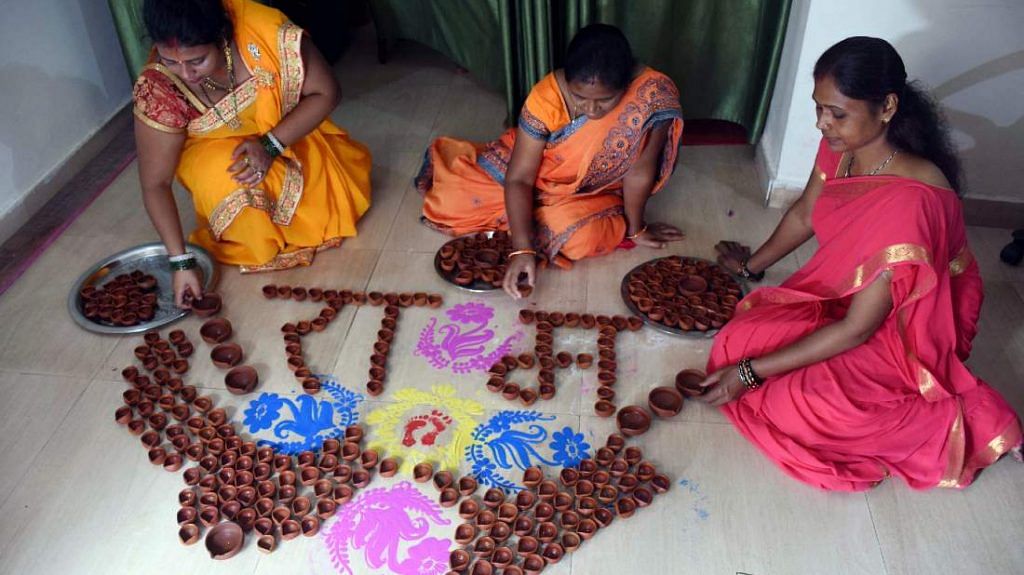The upcoming Ram Mandir in Ayodhya is not just any temple structure but an assertion of Hindu solidarity. With Kameshwar Chaupal, a Dalit who laid the foundation stone of the temple three decades ago and now as an active member of the Ram Temple trust, the significant position of Dalits in the Hindu imagination is a foregone conclusion. There is much debate and distortion regarding the Hindu social order on whether it is birth based or worth based. That debate will continue because it serves India’s political class, which is in a constant pursuit of construction and manipulation of identities for electoral gains.
The presence of Kameshwar Chaupal has largely gone unnoticed for obvious reasons. Apart from Chaupal, the leaders who were at the helm of the Ram Janmabhoomi movement — Kalyan Singh, Uma Bharti and Vinay Katiyar — came from the lower caste and backward communities. However, India’s academic and intellectual class is not able to reconcile with this because it endures on building falsehood over the caste system, which is undoubtedly one of the most important civilisational fault lines.
Also read: Idea of India wasn’t demolished at Ayodhya. That happened in our ‘liberal’ homes
Deeply inclusive historical foundations
Of the many available versions of Ramayana, the most authentic one is by sage Valmiki, who comes from the socially backward community in modern sociological context. It cannot be a mere coincidence that the authors of both Ramayana and Mahabharata — Valmiki and Ved Vyasa — were Dalits.
Valmiki will be present in this modern incarnation of Ram temple as well. Among places “important to the (Dalit) community” that have sent soil for the bhoomi pujan in Ayodhya includes Maharshi Valmiki Ashram in Sitamarhi and Valmiki Ashram in central Delhi, according to a news report.
“Dalits have been the cultural soldiers of our civilisation,” argues Kaushal Panwar, a Dalit assistant professor of Sanskrit in the University of Delhi. Speaking about the Shabari incident, she told me, “Ram, during his vanvas (exile), comes face to face with an old tribal lady living in a dilapidated house eating berries. Ram proceeds towards her in spite of the resistance by his brother Lakshman and shares the fruit and engages with the woman like an equal.” This clearly is indicative of the deep-rooted respect for the subaltern communities in the holy scriptures.
Apart from Shabari, Ahalya and Nishadraj incident also offers an insight on how Ramayana, as VHP secretary-general Milind Parande puts it, is an “outstanding illustration of social harmony”.
There are many such stories in the rural parts of India that have a great semblance to the marginalised sections of our society. Kabir, who has a massive following among the OBC, SC and ST communities in north and east India, also praises Ram unequivocally. In his devotion to Ram, he calls himself his pet. “कबिरा कुत्ता राम का, मोतिया मेरा नाम। गले राम की जेवरी, जित खैंचे तित जाऊँ”। Such is the dedication of icons who are worshipped and followed by Dalits in large numbers.
The mention of Chhattisgarh’s Ramnami community also becomes significant in this context. Its members have Ram’s name tattooed all over their bodies. A century-old movement that signifies the fact that even the anomalies of untouchability did not stop them in their worship of Lord Ram.
Also read: Only Lalu Prasad Yadav could have stopped Mandir politics again. BJP must be relieved
Emblem of Hindu unity
For far too long, Hindus have been subject to foreign dominations. In one of my previous articles for ThePrint, I have argued how the rise of Prime Minister Narendra Modi was the manifestation of the collective subaltern. There is a special place for Dalits and OBCs in the evolved Hindutva matrix. The whole idea behind mooting a fictional alliance between Dalits and Muslims is an attempt to break the Hindu unity.
Dalits, like the upper castes, have shouldered the duties and obligations of the Hindu civilisation since time immemorial. That the majority of Dalits are unapologetic Hindus is a testament to this fact. Regardless of the overtures by the missionaries and the Marxists, Dalits are and will eternally continue to be loyal and devoted followers of Sanatan Dharma.
The author is an Assistant Professor at Patna University and Fellow, India Foundation. He is spokesperson, Bharatiya Janata Yuva Morcha, BJP’s youth wing, Bihar. Views are personal.
